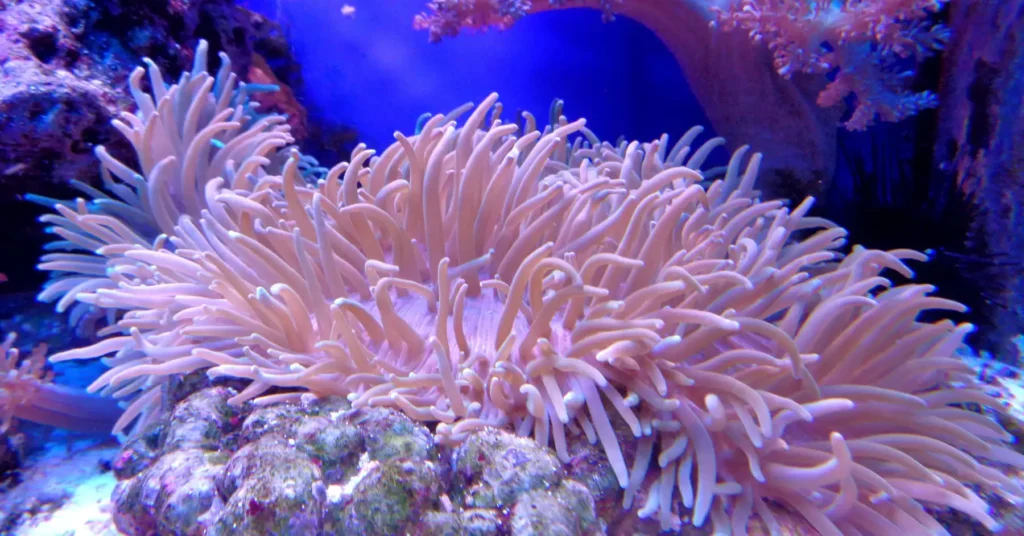The Majano Anemone is one of the most common pests in reef aquariums. This pest is very unsightly and can overgrow or kill corals, it is also known to sting and poison fish. A Majano anemone is a pest of the sea, and it’s the most common nuisance that plagues saltwater aquariums. It’s a tiny white anemone with a black dot in the middle that can be especially difficult to remove from the aquarium once it has taken residence. The Majano has no true pedal disk but instead attaches itself by way of a basal disk that is capable of adhering to rocks, substrate, powerheads, glass, and even other anemones.
The majano reproduces by budding off multiple clones from its oral disk. In this way, one majano can turn into many within a matter of days. Left unchecked, they will spread quickly across the aquarium to form a carpet-like colony on the substrate or aquarium walls.
Majanos are quite aggressive and will sting nearby corals and kill them off in order to make room for themselves. They can also stow away on new live rock or coral frags that you add to your tank and invade your system this way. There is no chemical cure for Majanos. There are tools and techniques that can be used to remove them, we will discuss all these tools and techniques in this article.
What is Majano Anemone?
The Majano anemone is a small light brown or grayish white anemone that has no tentacles. It can be found in many different parts of the world, but often is most common to areas with warmer waters. The Majano anemone reproduces asexually and can spread quickly within your tank. What makes them so difficult to control is they reproduce quickly and they do not tend to stay in one spot in the tank. Their movement around the tank makes it nearly impossible to target them all at once. Majano Anemone, also called Majano Wand, is described as a “bluish-white colored anemone with white or purple tips, and usually has some green algae growing on the center column.”
The Majano Anemone can be a nuisance in the reef aquarium. It is not actually an anemone at all, but a colonial species of cnidarian related to corals and anemones. They are not photosynthetic like most other anemones so they must feed on small invertebrates such as copepods or amphipods which makes them beneficial for your tank if controlled properly. They are extremely aggressive and will sting neighboring corals, causing them to recede or even die. They look similar to Aiptasia but are larger and have very long tentacles.
Majano Anemones, or Majanos as they are called by the locals, are pesky stinging anemones that can be quickly spread in your tank. They are a nuisance as they grow quite rapidly and sting corals, creating tissue damage. Majanos are common in new tanks and thrive in nutrient-rich environments. As a result of their rapid growth, it is important to keep them under control. The Majano Anemone is actually not an anemone at all, but rather a hydrozoan which is related to jellyfish. They are extremely successful at reproducing and spreading through aquariums via their life cycle stages. Every aquarium has them, but if you don’t want them, then you need to know how to eliminate them.
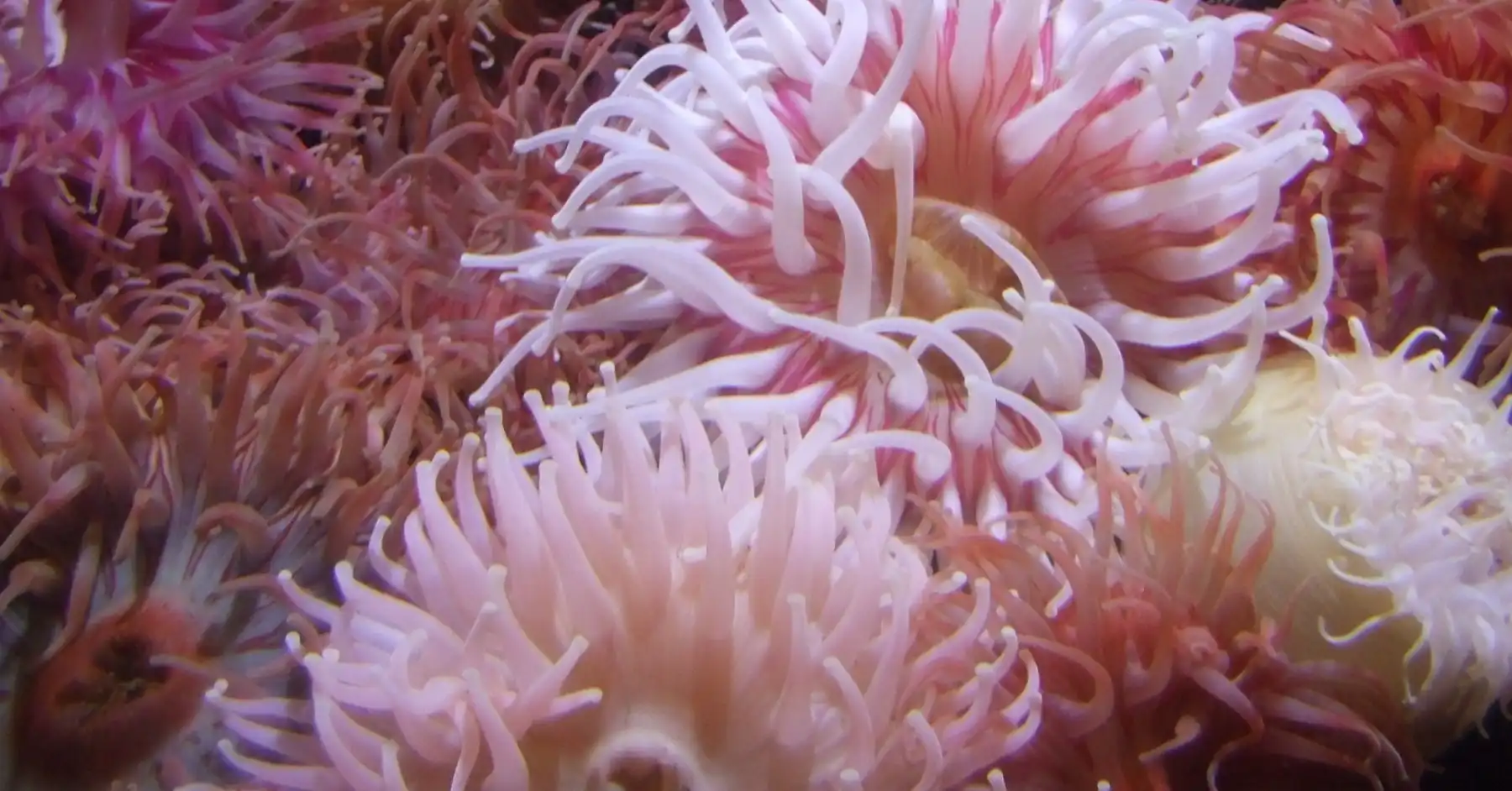
Majano Anemone Identification
Majano anemones have very thin tentacles (unlike Aiptasia), and they often have a yellowish cap at the centre. The Majano anemone is a common scourge of reef aquaria. It is identified by its translucent body and long thin feeding tentacles. When it grows large, asexual reproduction can occur, forming new anemones from the old ones. These new anemones are connected to the parent through stolons (root-like structures). Majanos are similar to other anemone species such as Aiptasia but lack the visible pedal disc that connects the anemone to the substrate.
These small anemones come in a variety of colors and sizes. They can be as small as 1/2″ diameter and light brown to green or as large as 2″ diameter and shades of purple, blue, pink and white. They are never the same color as your rock work. If you see something that matches the color of your rock work it’s likely either a pest snail or an acro.
They are easy to identify by their long white stalk topped with a translucent balloon-like bulb with light blue vertical lines running through it. They use this bulb to capture food in the water column and extend tentacles like other anemones do, but they do not look like most anemones. They should not be confused with bubble tip anemones (Entacmaea quadricolor), which are usually purple in color and grow much larger than majanos. The Majano wand anemone is much smaller in size and has only one bulb at the top of a long white stalk instead of multiple bulbs like bubble tips have.
What Do They Eat?
Majano anemones eat a wide variety of foods, but many of them have highly specialized diets. They may only eat small pieces of coral, like the “chips” or “scapes” that developing polyps produce. If your anemone isn’t eating properly, it’s because it’s eating too much. This usually happens when you feed them too much food at one time or when you give them food that’s way above their nutritional requirements.
The day-to-day requirements of your anemone depend on its size and its species. The general rule is that they will eat more if they get bigger. The same goes for the types of foods they like: If a new type of food appears on the market, add it to your tank if you want your anemone to eat it. Majano Anemone are carnivores. They have a powerful sting and will use their tenticles to catch and eat small prey.
Majano Anemone should be fed 2-3 times weekly with live or frozen meaty foods such as brine shrimp, mysis shrimp, chopped seafood, krill or silversides. It is best to feed your Majano Anemone defrosted frozen food that has been placed in a dish and then rinsed under a powerhead to remove any excess preservatives. Many aquarists also feed their Majano Anemone some fresh seaweed based foods such as dried seaweed (nori) which is a good source of vitamins and minerals. The Majano Anemone is not a very demanding eater, but it does need to be fed regularly.
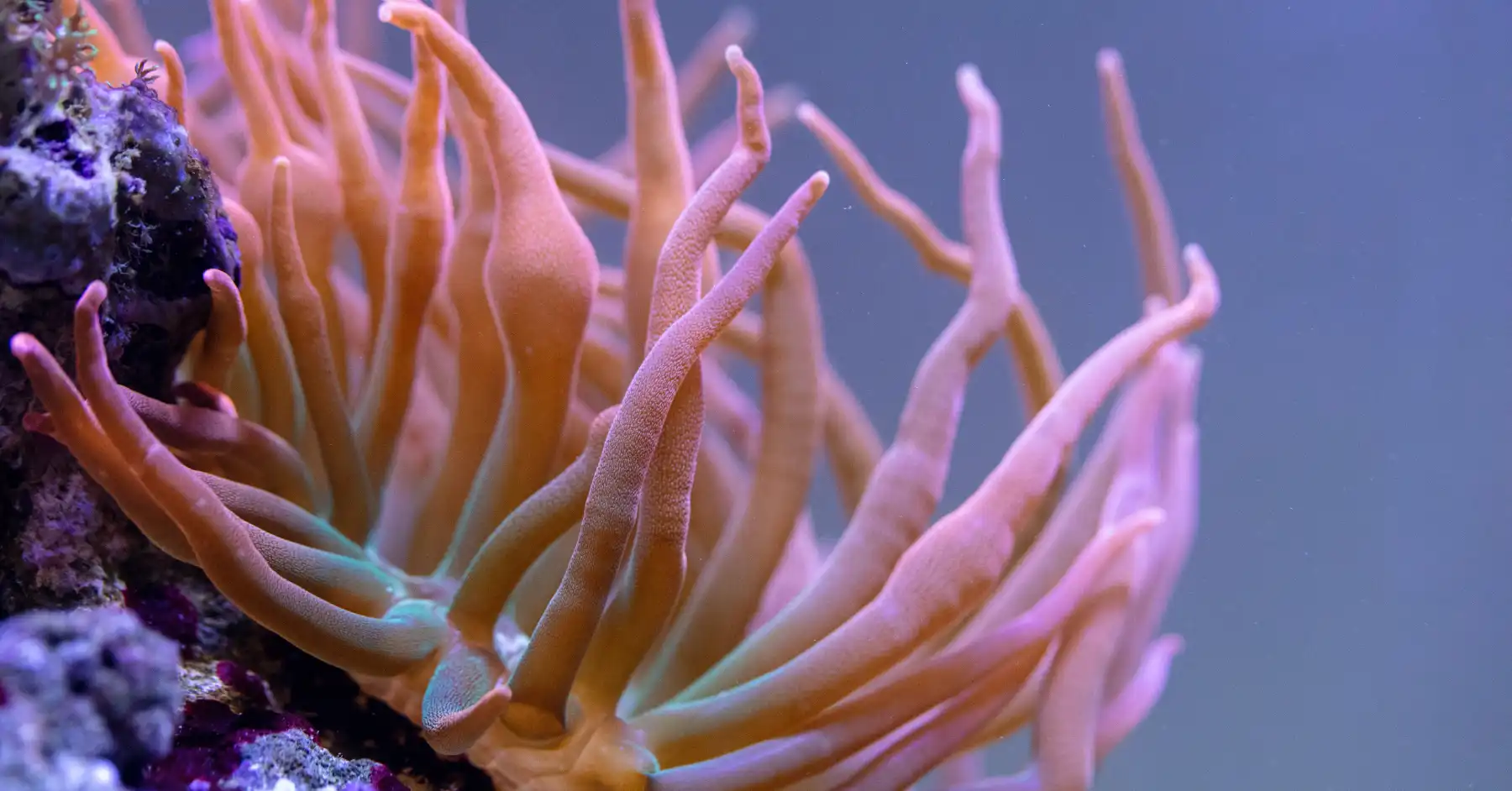
How to Get Rid of Majano Anemones?
Majano Anemone is a problem in many aquariums and a problem that can be difficult to get rid of. They look like tiny mushrooms, about the size of a pencil eraser, and come in different colors, ranging from green to orange to purple. These anemones are not related to corals or soft corals but are actually related to feather dusters which are often found in saltwater aquariums.
One reason Majano anemones are so hard to get rid of is because they reproduce quickly. Majano Anemone also multiply by budding which means that if you do not get an entire colony at one time you will continue to have new offspring emerge after you have eradicated what was present at the time.There are several methods to removing majanos, however some are more difficult than others.
Injection
If you can catch them early enough, the easiest way to kill them is by injecting them with vinegar or other substances. The amount of vinegar you need to inject depends on the size of the Majano. It may take a few tries to get it right.
Electric flatworm
Electric flatworm stop provides an electric shock that will kill Majano anemones as well as flatworms and many other pests. You simply fill the syringe up with water and then press it against the Majano until it turns white and dies.
Predators
Many sea stars, snails, and other animals will eat majano anemones, however the only one that is commercially available is the Harlequin Tusk (Choerodon fasciatus), which can be very expensive. The tusk will not actively seek out the majanos, but if you have one in your tank it is a good bet that it will eventually find them. Be careful to not use copper based medications or disease treatments as they are very sensitive to copper.
Natural Methods
You can also let nature take its course by allowing certain animals to control them. The Saddled Butterflyfish (Chaetodon ephippium) and the Copper-banded Butterflyfish (Chelmon rostratus) will graze on anemones, especially majanos. However, they may not eat all of them, so you may still have some left over.
Chemical Controls
The best way to eradicate them is through chemical controls. This method will work for most aquariums smaller than 200 gallons and may also aid in controlling more difficult corals such as xenia and zoanthids.
Biocides
Use biocides to destroy these pests; however, some hardier species may survive this treatment. To use biocides, you must move the affected coral out of your tank. Moving the coral allows you to avoid harming other creatures in your aquarium. Biocide products include CoralRx, which is highly effective in eliminating majanos but can be harmful to other invertebrates if not used properly.
Use a Toothbrush
If you want to remain chemical free and don’t mind getting up close and personal with the pest anemones, then you can use an old soft-bristled toothbrush to manually remove them from your corals. We don’t recommend this method since it requires a lot of time and effort, and there are much more effective methods out there.
Saltwater Dips
Saltwater dips are a good option for getting rid of Majanos as well as other types of pests. You place the pest in a bucket filled with saltwater and immerse it for about two minutes. This will kill the pest and prevent it from reproducing or stinging anything else in your reef tank.
Bleach Solution
A bleach solution can also be used for killing Majano anemones in the tank. Mix one part bleach with nine parts freshwater, then soak the pest for about 30 seconds in this solution. Dispose of the anemone after you have soaked it so that it doesn’t reenter your aquarium environment.
Brine Shrimp
Brine shrimp are known to be good at killing majanos. The reason is that brine shrimp naturally produce copper sulfate which helps them prevent the growth of algae. Some people have reported that feeding brine shrimp can actually kill majanos within one week. If you don’t have a brine shrimp culture, you can buy some online or at your local pet store.
Copper Sulfate
Copper sulfate is another effective way to kill majano anemones in your reef tank. It works just like salt and will slowly dry up the anemone until it dies. The downside is that copper sulfate is essentially poison for anything else living in your tank too, so you have to be very careful when using it. This means removing any fish and invertebrates from your tank before application, as well as doing frequent water changes to dilute any residual traces of it in your tank water afterwards.
When they die, remove them immediately and put them in a plastic bag so that you don’t infect other living creatures in your tank with copper sulphate.
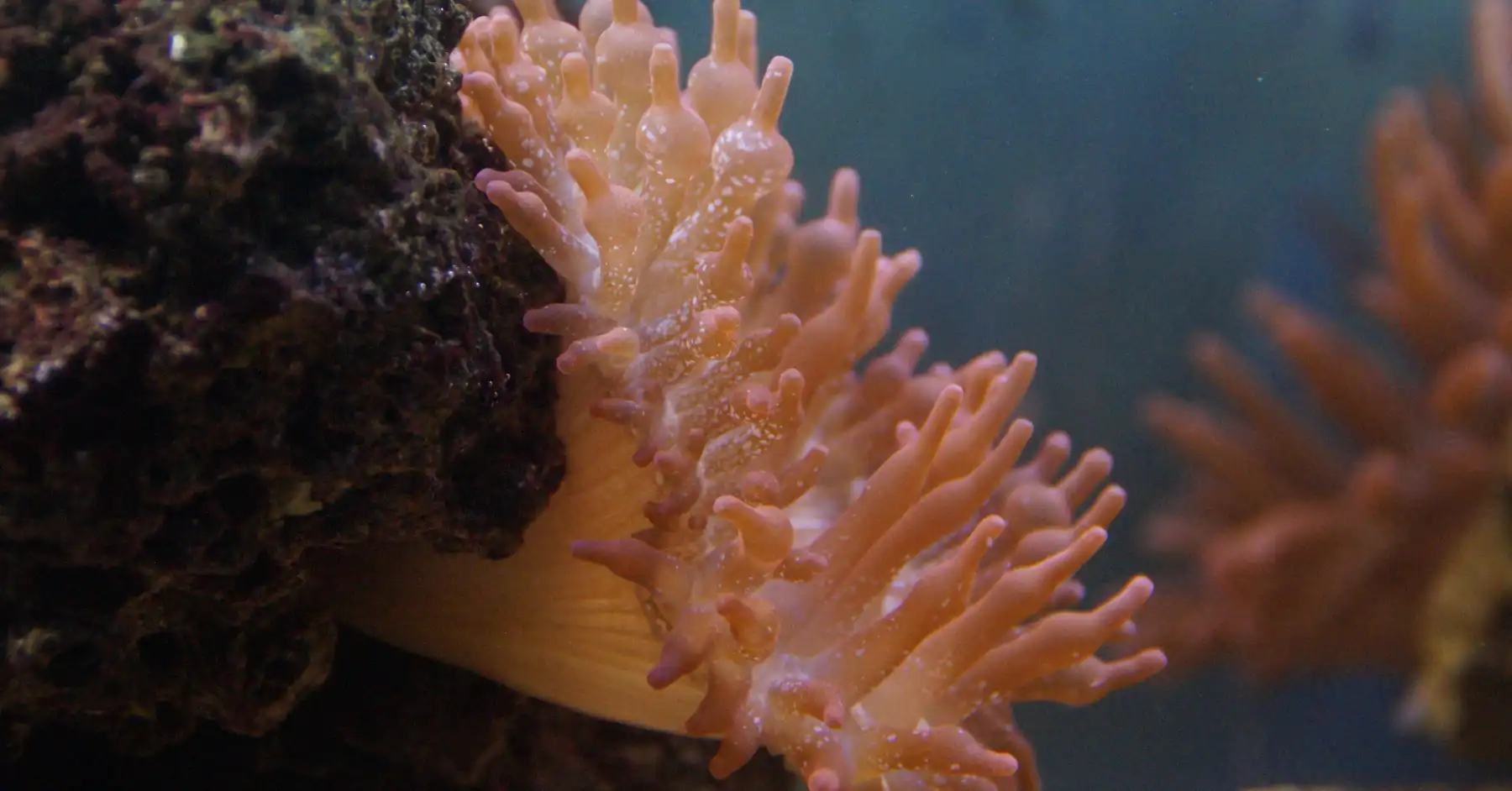
Majano Wand – A Unique Tool for Removing Pest Anemones from your Reef Tank!
The Majano Wand is a unique tool for removing pest anemones from your reef tank! Once considered a “reef safe” creature, the Majano Anemone has become a nuisance in many reef tanks. Because of their aggressive nature, they will often overtake corals and other invertebrates, causing harm to other inhabitants in the tank.
It is a truly remarkable tool for removing the dreaded Majano Anemone from your tank. The specially designed tip is electrified and when activated with the touch of a button will effectively kill the Majano Anemone in seconds. In addition to effectively killing Majano, this amazing tool also effectively removes Aiptasia anemones as well.
It is specifically designed for the removal and destruction of Majano Anemones, or Aiptasia. It works by sending a small current into the saltwater that electrocutes the anemone and kills it instantly. The Majano Wand is a combination of two things. The first part is a telescoping pole with an acrylic handle that has been machined to fit your hand perfectly and the second part is a DC to AC power inverter which takes the low voltage from your battery and converts it to the high voltages required.
The Majano Wand uses this second part (the inverter) to generate a very high voltage and very low current, similar to a stun gun. These two factors together create what is called an “electric arc”. This arc will kill Majano Anemones instantly without damaging your aquarium corals or other livestock or plants.
So, Majano Wand is a device made to kill and remove Majano Anemones, which are a type of pest anemone that can be difficult to eradicate. This tool works by using electricity to fry the anemone and then vacuuming it out of the aquarium. It comes with a magnet that attaches it to the inside glass panels of your tank, allowing you to easily move it around. The Majano Wand is extremely effective at killing these anemones, which makes it one of the best ways to deal with them in the aquarium.
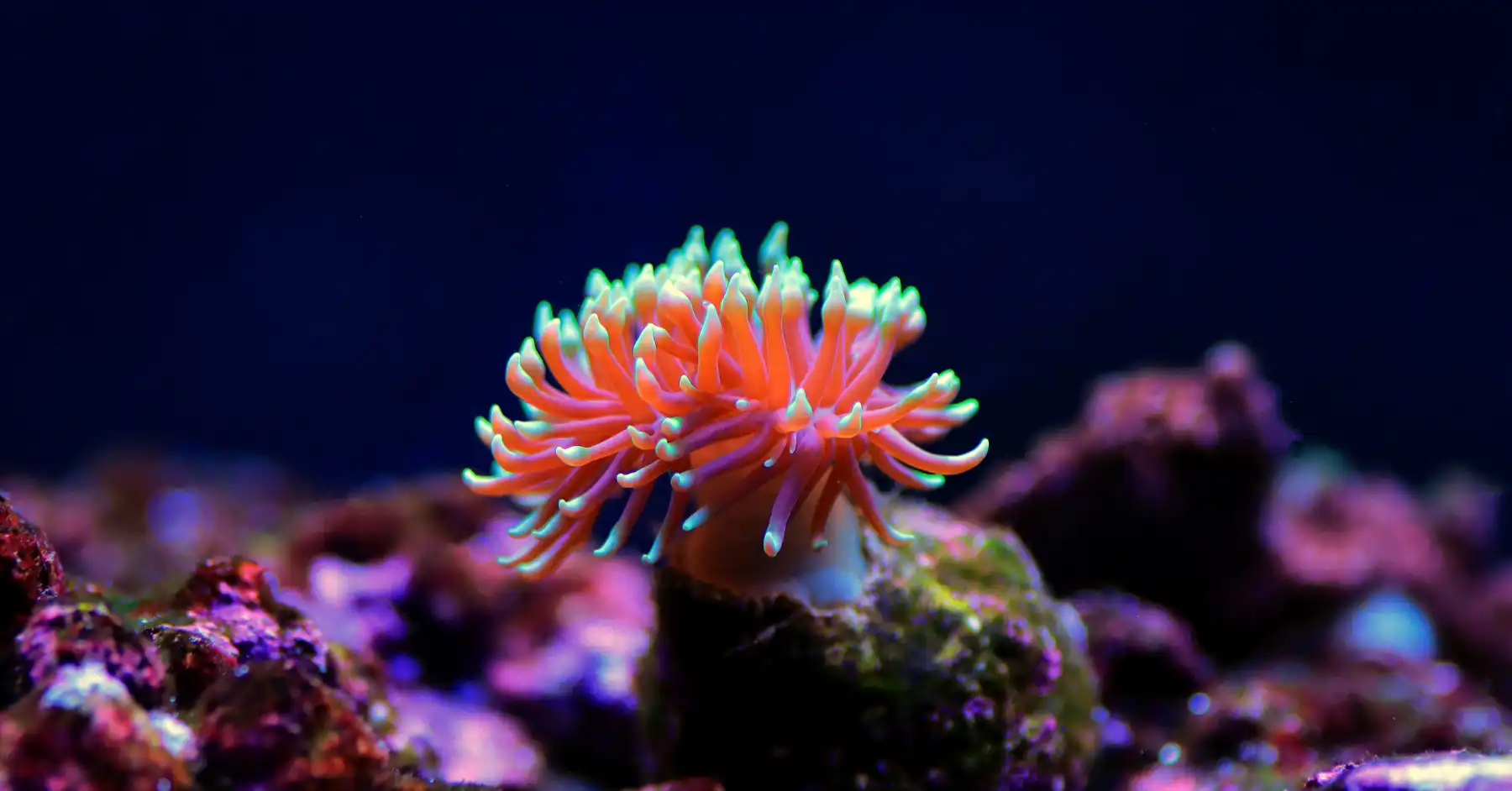
Majano Anemone – Related FAQs
How can you tell the difference between anemone and Majano anemone?
Majano anemones are not true anemone. They are some of the most common and troublesome pests in marine tanks. In fact, if you have a new tank, you will probably see them at some point. The best way to deal with Majano anemones is prevention. The Majano anemone is a pest anemone that can become a real problem in the home aquarium. The Majano anemone is not actually an anemone, but a colonial hydroid. In appearance, it looks like a miniature version of the bubble-tip anemone, complete with extended tentacles. A single specimen can also look like a small bubble-tip anemone and be mistaken as such.
The Majano anemones are quite similar to the bubble-tip anemone in many ways. They can resemble the bubble-tip anemones in size and shape when they are young and kind of small. In fact, this is what makes them very difficult to find since they don’t look all that suspicious when they are in their juvenile form.
A great way to tell them apart from other types of Anemones is to check whether or not it has a foot attached to it or not. If it doesn’t have one, then you might have Majanos on your hands. Majanos will also tend to move around more than any other type of Anemones out there, and they will also be able to reproduce much faster than others too.
What fish eats anemones?
The most famous of the anemone-eating fish is the clownfish. Clownfish are small, colorful fish that live in large groups among the protective tentacles of sea anemones. Other types of fish that eat sea anemones include butterflyfish and Moorish idols.
So another method of dealing with Majano anemones is to get a clownfish. They will host the Majano anemones and keep them under control. If you have lots of corals, then you probably want to avoid this option. While it is true that certain species of clownfish are able to host certain types of anemones, there are no more fishes that eat anemones.
How big do Majano anemones get?
The Majano anemone is a small pest anemone that grows in the aquarium. They are very hard to remove and will spread quickly. They do not need a host coral to grow once established. They can grow to about 1/2 inch in diameter but can be much smaller than that when first introduced. Majano anemones are small creatures. They typically don’t get bigger than a quarter, but that doesn’t mean they are not a problem in your saltwater tank. Majanos go through phases of exploding in numbers and then disappearing for months at a time. One day you may have just a few and then the next day you have hundreds or even thousands around your coral.
What kills an anemone Effectively?
There are a few ways to get rid of anemones. But the only one that is fast and reliable is hair algae. All other methods require you to return to the tank frequently, which is not always possible. The only two ways that are truly effective are:
Removing them by hand. This is a very reliable way of removing them, but it is quite time-consuming, as you have to be sure that you got the whole anemone out of your aquarium. Also, if the handle collapses inside your tank, this may not be possible to do.
Feeding them hair algae. Hair algae will kill them within days, but they will take all of your corals with them. What kills an anemone is also a lack of food. Anemones don’t move around much so you may think they aren’t eating if you don’t see them moving toward food, but this isn’t true. They will catch whatever drifts by them. Make sure you feed your anemone and do it often!
Lighting is another thing that can kill an anemone if it is not set correctly. Anemones need proper lighting or they will shrivel up and die over time. This is why people with new tanks should not get an anemone until the tank has been properly cycled for at least a year.
Can you keep Majano anemones together?
You can keep Majano anemones together. They are tiny and wouldn’t cause much of a problem even if they multiply in number. If you have more than one Majano anemone in your tank, it’s best not to keep them together as they will reproduce quite easily if kept together.
If there are multiple Majano anemones, they should be removed and put into a separate container with some saltwater from the main tank so that they don’t die off and release toxins into your display tank. Majano Anemones have long been thought to be one of the most difficult pests to eradicate from a marine aquarium. This is due to its ability to reproduce at an alarming rate, as well as its ability to resist most of the common treatments used by hobbyists. The Majano Anemone does not have long tentacles like some other anemones and this makes it difficult to see them unless you are looking for them.
Conclusion
The Majano anemone is probably one of the most frustrating pests to have in your reef aquarium, this article aims to give you the best possible way to remove them and achieve success. All in all, it is important for us to be aware of the Majano anemone and how to get rid of them. They are not something that we want to consume but are a nuisance on our reef aquariums and other types of marine aquariums that we may have. Be aware to limit the amount of light that you direct on your rocks so that they do not grow too quickly. After reading this article and understanding the steps for dealing with Majano anemone. We hope this information will help you to understand about Majano anemone and its removal methods.
